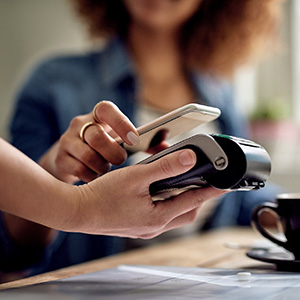
Forty-five percent of all diamond purchases in major markets across the globe are attributed to millennials according to De Beers, and they drive 59% of the demand in the United States. The industry continues to evolve for new and heritage brands alike, and it’s more important than ever to understand the buying habits of millennials and Gen Z shoppers. Bread has commissioned an independent study of 500 millennials (U.S. consumers aged 23–35) about their jewelry-buying habits, and the results show how their preferences and approach to jewelry informs their behavior at large, while also subverting some commonly held expectations.
Millennials want quality, unique design, and a brand name.
More than half of millennials (54%) are planning to give jewelry as a gift for Valentine’s Day this year. What are they taking into consideration when making this purchase? When it comes to the jewelry itself, their top three factors are quality, a unique design, and a trustworthy brand.
Sixty-five percent of millennial shoppers care most about the quality of the stones and metals they’re buying, while 45% care most about finding a truly unique design. However, 86% of millennials care about the brand name of their jewelry—which may act as a stronger indicator of the quality and design of their purchase.
When it comes to the direct-to-consumer brands that are rising in popularity compared to heritage jewelers—newer brands such as Noémie, Mejuri, MVMT, EraGem, and Vrai & Oro—their priorities are slightly different. Price is the number one reason millennials are interested in these brands, with unique design and quality coming in second and third, respectively.
Millennials clearly prioritize distinctive pieces when it comes to selecting a retailer, with 46% ranking design as one of the most important factors in picking a jewelry brand. Millennials don’t simply want an assurance of quality or a high price tag, they want to find something truly special or custom that speaks to their tastes and suits their personal style.
Millennials want diamonds most of all.
When we asked which gemstones and precious metals they preferred, it turned out that diamonds are a millennial’s best friend: 50% said they wanted to receive diamonds as a gift. Forty-one percent said they wanted white gold, 32% wanted silver, and 31% wanted sapphire, with only a meager 6% hoping for palladium this year. You can find the full breakdown of millennial preferences in Bread’s research report.
When it comes to how those stones and metals are produced, customers are divided. Forty percent of millennial shoppers prefer that their stones are lab-grown, while 20% prefer those that are mined. Surprisingly, two of the least important factors for picking a jewelry retailer were whether their stones were ethically sourced and their corporate responsibility. While millennials may be more conscious of what they’re buying than other age groups, it seems that only a specific subset choose their purchases primarily on ethical concerns.
Millennials want to finance their jewelry purchases.
Fifty-four percent of millennials are considering giving jewelry for Valentine’s Day this year, but only 41% can definitely afford the jewelry they want to buy. If they can’t comfortably make that purchase on a single paycheck, they’ll look to other payment options. Buy now, pay later financing can help put the gift of jewelry into reach. That’s why 69% of millennials prefer to shop at a jewelry retailer that offers interest-free financing and are nearly five times more likely to shop at a jewelry retailer that offers interest-free financing than one that doesn’t. Seventy-three percent of millennial jewelry buyers would choose interest-free installments over a 5% discount. It can be a huge motivator, one that also helps jewelry brands retain brand and pricing integrity by acting as an alternative to traditional discounts.
In 2020, meet your millennial customers’ demands and give them what they’re asking for. To learn more about shifts in millennial buying behavior in the jewelry sector, download Bread’s full report.